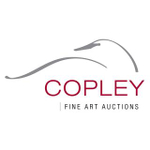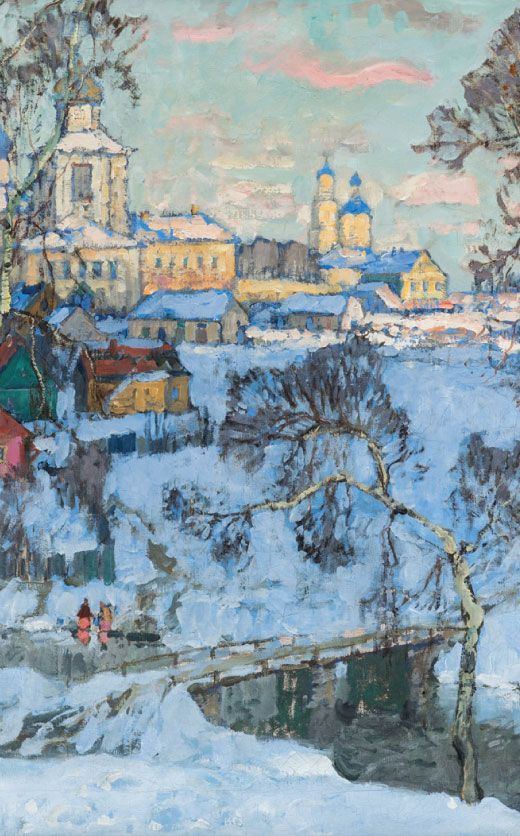The Purnell-Watson Pintail Pair by Dave "Umbrella" Watson (1851-1932)
Lot 47
About Seller
Copley Fine Art Auctions
20 Winter Street
Pembroke, MA 02359
United States
Founded in 2005, Copley Fine Art Auctions is a boutique auction house specializing in antique decoys and American, sporting, and wildlife paintings. Over the course of the last two decades, the firm has set auction records for not only individual decoy makers, but also entire carving regions. Copley...Read more
Categories
Estimate:
$125,000 - $175,000
Starting Bid
$62,500
Absentee vs Live bid
Two ways to bid:
- Leave a max absentee bid and the platform will bid on your behalf up to your maximum bid during the live auction.
- Bid live during the auction and your bids will be submitted real-time to the auctioneer.
Bid Increments
| Price | Bid Increment |
|---|---|
| $0 | $50 |
| $1,000 | $100 |
| $2,500 | $250 |
| $5,000 | $500 |
| $10,000 | $1,000 |
| $25,000 | $2,500 |
| $50,000 | $5,000 |
About Auction
By Copley Fine Art Auctions
Jul 10, 2025
Set Reminder
2025-07-10 10:00:00
2025-07-10 10:00:00
America/New_York
Bidsquare
Bidsquare : The Sporting Sale 2025, Day 1
https://www.bidsquare.com/auctions/copley/the-sporting-sale-2025-day-1-19844
Lots 1-316 Copley Fine Art Auctions cinnie@copleyart.com
Lots 1-316 Copley Fine Art Auctions cinnie@copleyart.com
- Lot Description
The Purnell-Watson Pintail Pair
Dave "Umbrella" Watson (1851-1932)
Chincoteague, VA, c. 1925
17 1/2 in. long
"A couple of interesting and well-informed guides led the way to the former home of Dave Watson, who departed this earth in 1938 [sic]. My two worthy leaders were Delbert Daisey and Millard Jones, historians of both the past and present sporting scene on Chincoteague Island's east side. Actually, without their memories and assistance Dave Watson, the finest carver of decoys that Accomack County, Virginia, produced, would still be unknown. The Watson homestead stands in a quiet spot back from the main road, safe from the summer traffic. Nothing remains to encourage a decoy pilgrimage. Even the knee-high pile of wood shavings, which must be viewed as the all-time fire hazard, is gone. But it seemed the best possible time and place to review what little is known about its former owner, known as "Umbrella" because he never left the house without carrying one. This quirk intrigued and surprised many members of the community of Chincoteague. Year by year the inevitable legend of the umbrella grew, but collectors have not allowed this eccentricity to dim the image of his carving skill. Watson had another habit, too. In a community of men who wore rubber boots as a way of life, the champion was Dave Watson, who was never seen in public or private without the inevitable boots. From head to toe, "Umbrella" or "Bootsie" was the driest carver on record." - Milton C. Weiler, "The Classic Decoy Series: A Portfolio of Paintings," 1969, pl. 24.
David "Umbrella" Watson is among the most distinct and revered of all Southern decoy makers. He first left Delaware for Willis Wharf, Virginia, on the upper edge of Northampton County. From there he eventually settled up the Intracoastal Waterway in Accomack County on Chincoteague. Watson earned his "Umbrella" moniker by always having one on hand, regardless of the weather, he's also said to have worn boots at all times and is also referred to as "Bootsie." In studying his exceptional decoys, it appears his broad exposure paired with his peculiar personality may have led to his unique approach to decoy making. His decoys have a style all their own with hollow bodies, which were not common in Accomack, raised wing tips, and highly pronounced eye brow carving finished with exceptionally detailed paint patterns using a suite of brush techniques.
William Purnell owned the best decoys from this Watson rig. In the "Great Book of Wildfowl Decoys," Purnell and his co-author relay that Watson "... made brant, geese, and black ducks primarily with a few canvasbacks, redheads, pintails, and bluebills and a limited number of shorebirds. The painstaking care that his carvings show is evidence of the time it took to carve them. He was a slow carver, and most of his decoys were too expensive for the average hunter." Indeed, this pintail pair was not made for the average hunter. They were crafted for the well-appointed Assateague Rod & Gun Club, just east across the channel from Chincoteague. This pair seems to have been incidentally preserved by the Great Depression. The Club was thriving in the 1920s, then in 1938 this rig was salvaged from an Assateague shed that was to be razed. They remain his best known pair extant.
Today the Assateague Club's few surviving pintails are recognized as Watson's most important works and they are second-to-none among all Southern pintails. Several drakes reside in top collections around the country with none better than this drake. The hen rounding out this rigmate pair is even more rare and unsurpassed by any Watson decoy to have surfaced. The duo was reunited by Don Kirson and together they represent a unique opportunity to acquire an iconic Southern pair.
Collectors, authors, and curators have celebrated this duo for decades. Flipping the bodies over, a look at the underside reveals nine unique collector and exhibition markings on each bird, including Purnell's "P" and "WHP Jr" brands, the Assateague Rod & Gun Club's "paw" brand, a Ward Museum label, and the "Kirson Collection" stamp. The hen also has the oval tag imprint of the great Southern decoy collector Charlie Hunter.
Excellent original paint with even gunning wear.
Provenance: Assateague Rod & Gun Club
William H. Purnell Jr. Collection
Charlie Hunter Collection (hen only)
Donald Kirson Collection
Literature: Robert Shaw, "Bird Decoys of North America," New York, NY, 2010, p. 211, exact hen illustrated. Joe Engers, ed., "The Great Book of Wildfowl Decoys," San Diego, CA, 1990, pp. 153-154, Watson discussed, p. 158, rigmate drake and exact hen illustrated. John Clayton, "Massachusetts Masters: Decoys, Shorebirds, and Decorative Carvings," The Ward Museum of Wildfowl Art, Salisbury University, 2010, pp. 47, exact hen and rigmate drake illustrated. Loy S. Harrell Jr., "Decoys: North America's One Hundred Greatest," Iola, WI, 2000, p. 95, exact drake illustrated.
Exhibited: Lincoln, Nebraska, "The Bird Decoy: An American Art Form," Sheldon Memorial Art Gallery, 1975. (hen only) Ward Museum, Salisbury, MDPlease refer to the description; if you have additional questions, email colin@copleyart.com.Condition
- Shipping Info
-
Copley does not offer in-house packing or shipping. For clients who require shipping, please complete the Shipping Release Form and return it with your payment. The form includes a list of shippers we frequently work with.
-
- Buyer's Premium



 EUR
EUR CAD
CAD AUD
AUD GBP
GBP MXN
MXN HKD
HKD CNY
CNY MYR
MYR SEK
SEK SGD
SGD CHF
CHF THB
THB
















